Carrot Garden Ideas: Creative Tips for a Bountiful Harvest
Growing your own carrots can be a fun and rewarding experience. With a few simple tips and creative ideas, you can transform a small patch of soil into a thriving carrot garden. Carrots are a versatile vegetable that can grow well in various conditions, making them perfect for beginners and experienced gardeners alike.
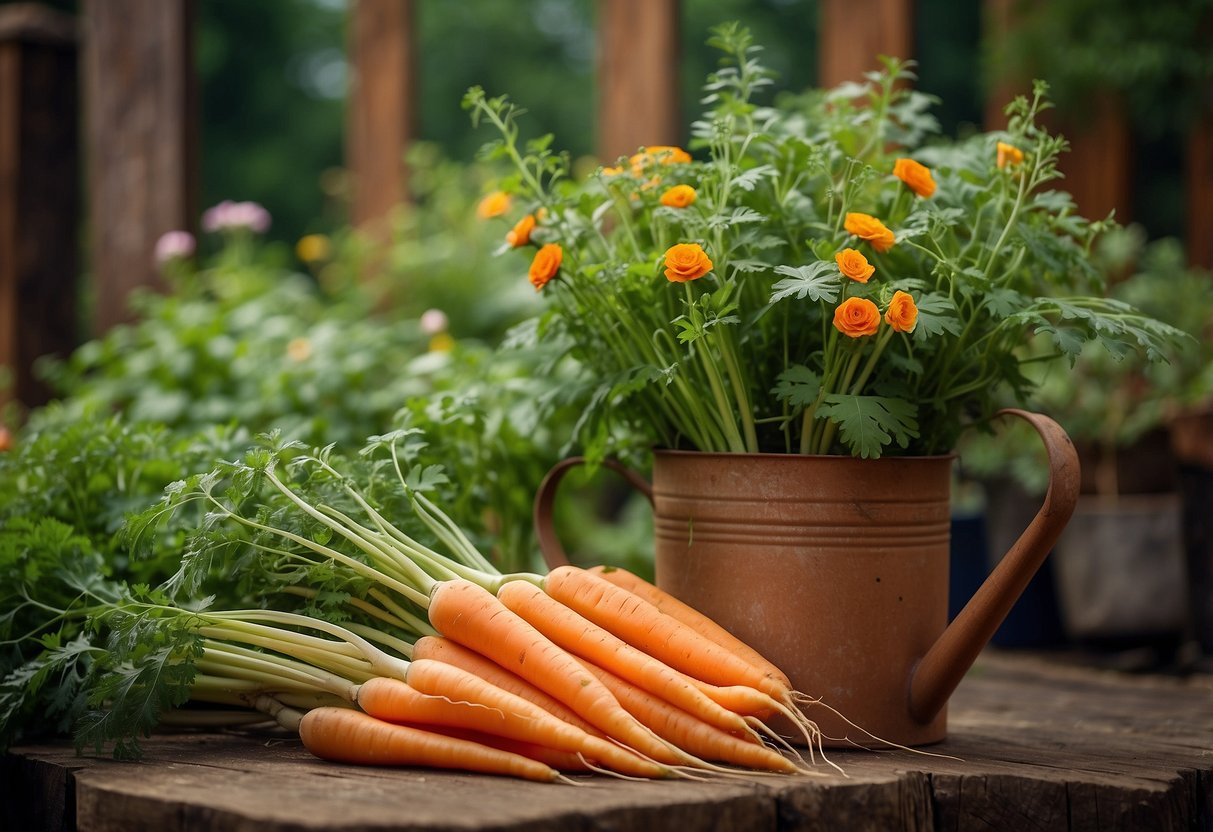
How can you create the best environment for your carrot garden? By selecting the right spot, preparing the soil, and choosing the right carrot varieties, you’ll set the stage for a bountiful harvest. Whether you have a large yard or just a compact space, there are plenty of ways to incorporate carrots into your garden.
1) Raised Bed Planting

Raised bed planting is a great way to grow carrots in your garden. Carrots need loose, well-draining soil, and raised beds help provide just that.
Make sure your raised bed is at least 12 inches deep. This allows the carrots to grow straight and long. Use compost-rich soil to give your carrots the nutrients they need.
Place the raised bed in a sunny spot. Carrots require 4-6 hours of sunlight each day. Plant the seeds about 1/4 inch deep and space them a few inches apart for best results.
2) Companion Planting Tips

When planting carrots, pair them with onions or green onions. These plants have a strong smell that keeps pests away.
Lettuce is also a good companion for carrots. It grows quickly and provides shade, helping to keep the soil moist.
Avoid planting carrots near dill. Dill attracts the same pests and can harm your carrot crop.
3) Vertical Garden Ideas
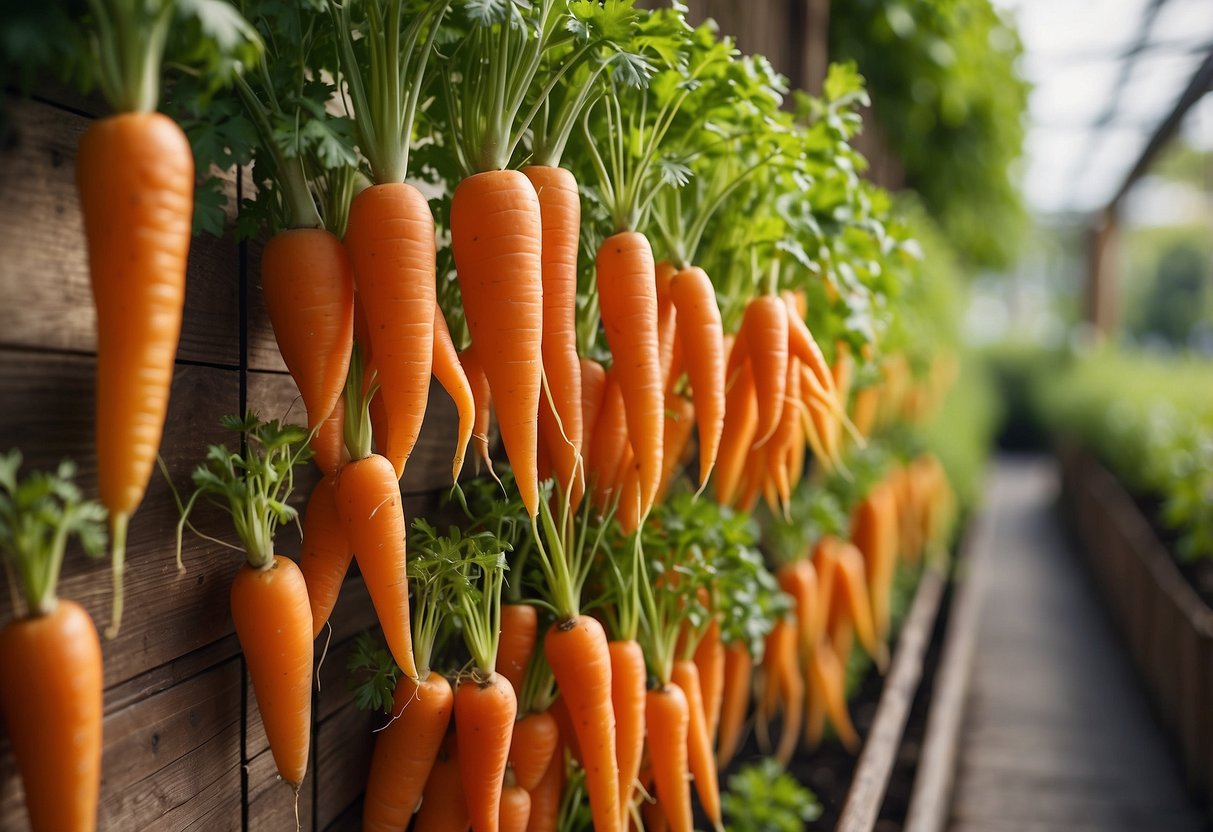
Vertical gardens are perfect for small spaces. One easy way to grow carrots vertically is to use wall-mounted containers. These containers can be attached to a sunny fence, allowing you to make the most of your vertical space.
A strawberry tower garden is another great idea. You can modify it to grow carrots and other root vegetables. This method also adds a nice aesthetic touch to your garden.
Another option is to make a living wall by securing a trellis panel onto a wall. You can plant a variety of vegetables, herbs, and flowers in pots supported by the panel. This is an attractive and space-saving way to grow your garden vertically. For more ideas, check out these vertical vegetable garden ideas.
4) Incorporating Herbs
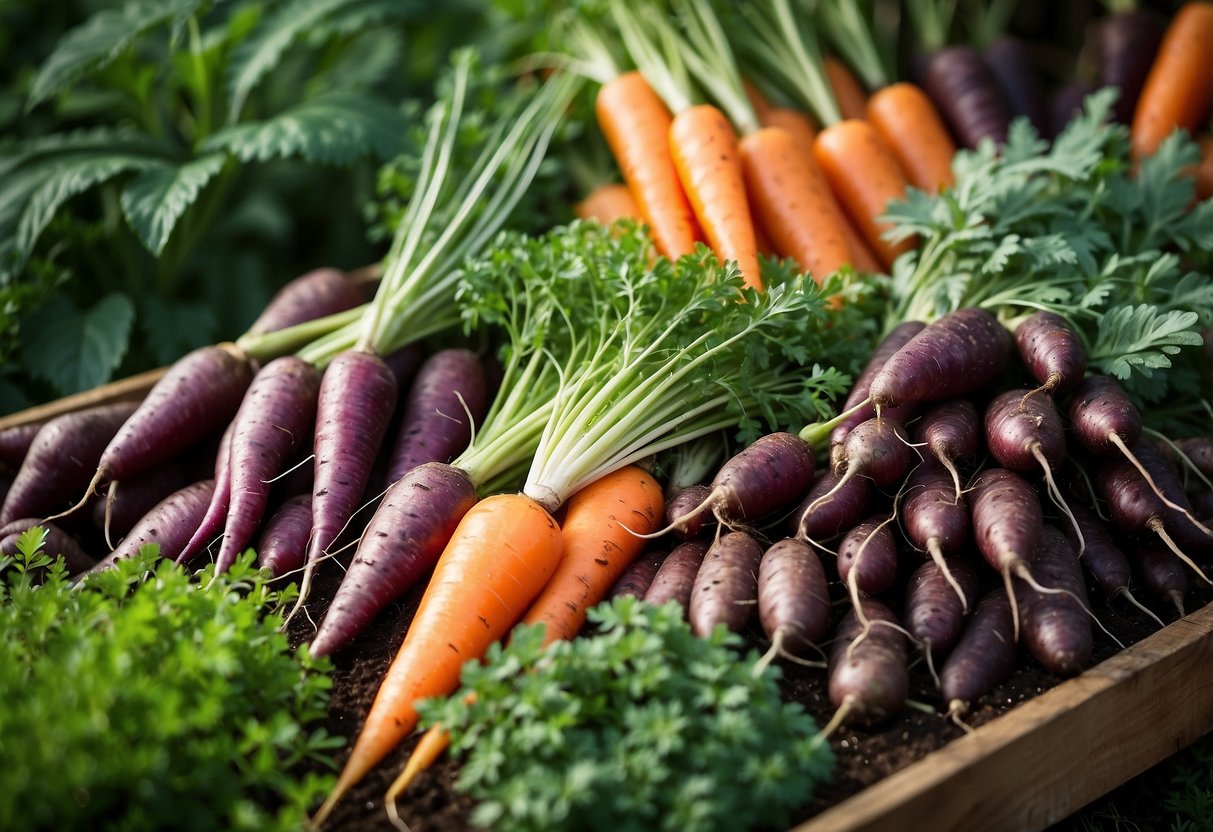
Adding herbs to your carrot garden can be a great idea. Some herbs, like basil and rosemary, help repel pests that target carrots.
Planting basil near tomatoes and carrots can keep harmful insects away. Also, mint can deter ants and aphids.
Think about using a mix of herbs, placing them around your carrot plants. This not only helps with pest control but also adds variety to your garden.
5) Using Trellises
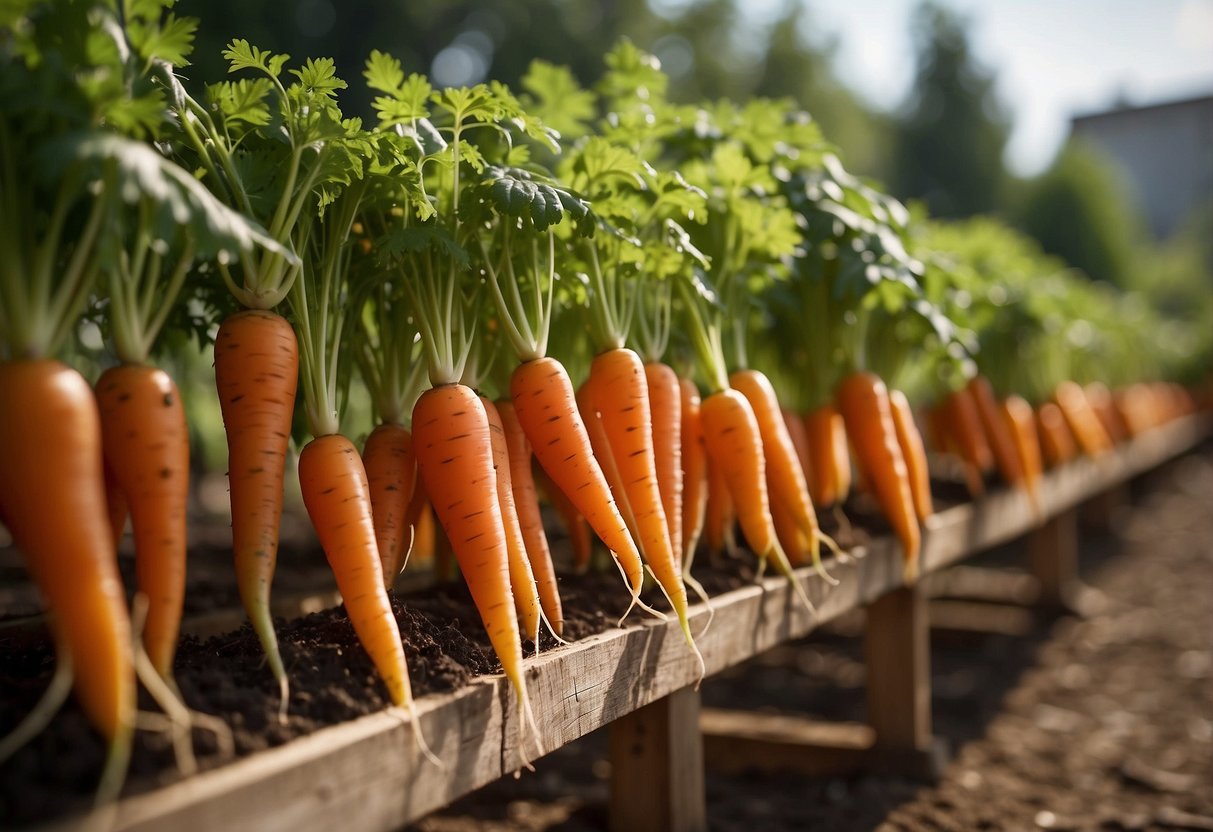
Using trellises in your carrot garden can add both functionality and style. A trellis can support climbing plants, freeing up space for your carrots to grow undisturbed.
To create a simple trellis, drive bamboo branches into the ground in an X formation. Secure them with twine to enhance stability.
Trellises also act as garden accents. Choose materials like wood or wire to match your garden’s theme.
6) Cold Frame Ideas

Using a cold frame can extend your growing season for carrots. Place the frame in a sunny location to optimize its performance. This will ensure your carrots get enough warmth and light.
A basic cold frame is simple to build. You can use materials like plywood and poly sheeting. A sloped design helps with rain drainage and keeps the inside warm.
Cold frames protect your carrots from cold temperatures, wind, and snow. This is especially useful in winter. Using clear plastic over the top section can help keep heat inside. Your carrots will stay cozy and continue to grow even in cooler weather.
7) Soil Preparation

Carrots love loose, friable soil. Start by tilling your garden bed to a depth of 10 to 12 inches. This helps the roots grow long and straight.
Remove rocks and debris from the soil as these can cause the carrots to grow crooked. Adding compost or well-rotted manure enriches the soil with nutrients.
After preparing, level the soil surface. This makes it easier to sow the seeds evenly. For more details, you can visit Growing Healthy Carrots.
8) Efficient Watering Systems
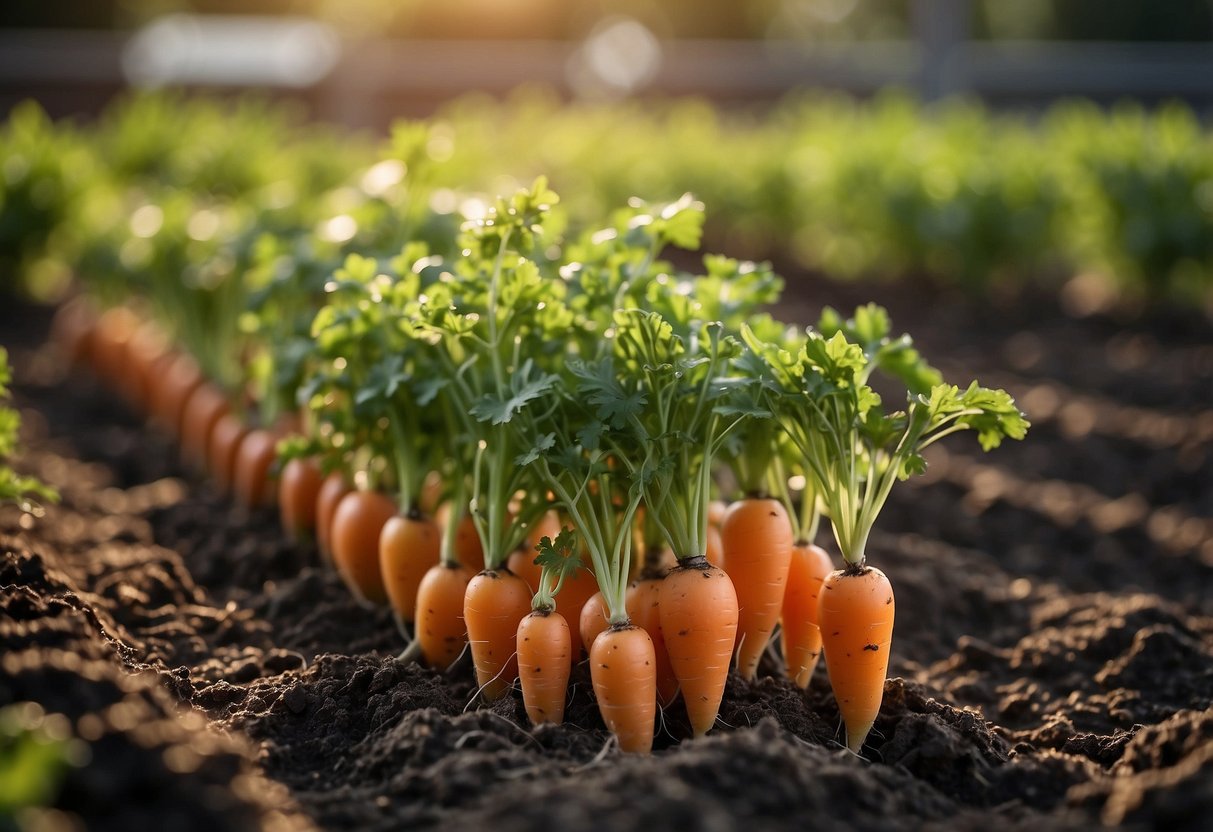
Using efficient watering systems can save you time and help your carrots grow better. Drip irrigation, for example, delivers water directly to the roots. This minimizes water waste and reduces weed growth by targeting specific areas.
You can also add mulch around your carrot plants. Mulch retains moisture and keeps the soil consistently damp, which is essential for healthy carrot growth.
9) Seasonal Planting Guide

Planting carrots can be easy if you follow a seasonal guide.
In spring, sow carrot seeds directly into the soil as soon as it is workable. Carrots prefer cool weather, so this is an ideal time.
In summer, thin your carrot seedlings to ensure they have enough space to grow.
In fall, plant a new batch for a late-season harvest. Carrots planted in late summer can often be pulled before the first frost.
For more details, you can check this monthly garden calendar.
During winter, cover your carrot beds with mulch to protect them from the cold.
10) Attracting Beneficial Insects

Bringing beneficial insects into your carrot garden can help keep pests away. One way to do this is by planting marigolds. Marigolds attract ladybugs and lacewings, which love eating aphids.
You can also plant goldenrod and zinnias to attract soldier beetles. Soldier beetles feed on grasshopper eggs and other garden pests. These flowers will make your garden a welcoming place for helpful insects.
Don’t forget to include Shasta daisies. Their open flowers provide nectar and pollen, which attract bees, butterflies, and hoverflies. Having these insects around can help keep your carrot garden healthy and thriving.
Choosing the Right Carrot Varieties

When planning your carrot garden, it’s important to choose varieties that suit your taste preferences and growing conditions. You’ll find options that range from heirlooms to hybrids, each with its own unique qualities.
Popular Carrot Types
Carrots come in many colors and shapes. For instance, Nantes carrots are known for their sweet flavor and crunchy texture. They have a cylindrical shape and a blunt end, making them easy to harvest.
Chantenay carrots are shorter and stouter, perfect for heavy or clay soils. They have a rich, sweet taste.
If you like eye-catching colors, consider growing Purple Dragon carrots. They not only look stunning but also have a sweet and slightly spicy flavor. For a mix of colors, you can try kaleidoscope carrots, which include varieties like atomic red, cosmic purple, lunar white, and solar yellow.
Heirloom vs. Hybrid
Heirloom carrots are traditional varieties that have been passed down through generations. They are often praised for their unique flavors and colors. Tendersweet is an example of an heirloom variety that is known for its tender texture and sweet taste.
On the other hand, hybrid carrots are bred for specific qualities like disease resistance or shorter growing times. Sugarsnax 54 is a hybrid variety that grows long, slim roots and matures quickly, making it ideal if you want a reliable and fast-growing option.
While heirlooms offer rich history and diverse flavors, hybrids can be more uniform and resilient in different growing conditions. Consider your preferences and needs when selecting which types to grow.
Preparing Your Garden
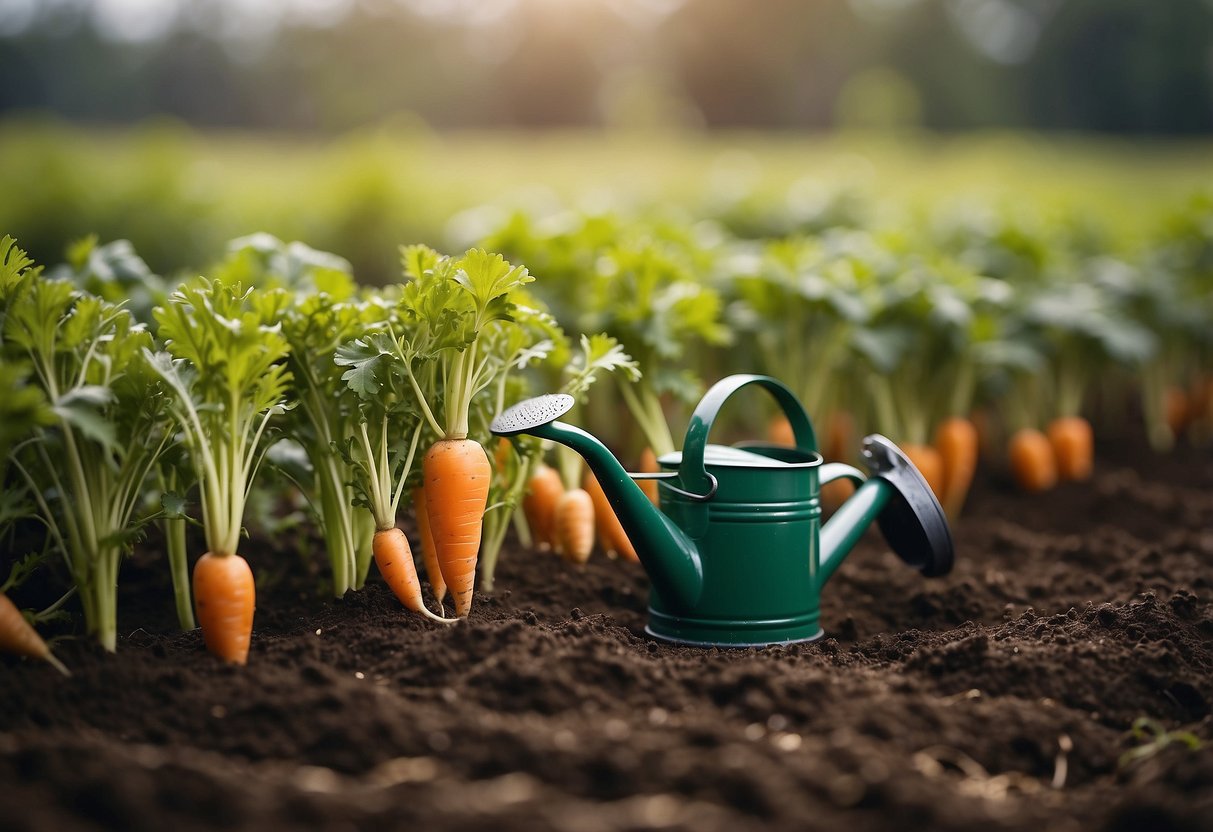
Creating the right conditions for your carrot garden is key to growing healthy and delicious carrots. Focus on preparing the soil and providing proper sunlight and watering.
Soil Requirements
Carrots grow best in light, loamy soil that is free of rocks and clumps. Start by loosening the soil to about 10-12 inches deep using a garden fork. This helps the carrot roots grow long and straight.
Remove any pebbles and rocks as they can cause the carrots to split. Adding compost or well-rotted manure enriches the soil, providing essential nutrients. Avoid heavy clay or sandy soils, as they can hinder carrot growth.
Spacing tips:
- Plant seeds about 1/2 inch deep.
- Space rows about 12-18 inches apart.
- Thin out seedlings to 1-2 inches apart once they sprout to avoid overcrowding.
Sunlight and Watering
Carrots need full sunlight for at least 6-8 hours a day. Pick a sunny spot in your garden to plant your carrots. This ensures the roots get the energy they need for healthy growth.
Water the soil regularly to keep it moist but not soggy. Carrots thrive in consistent moisture levels. Aim to water deeply once or twice a week, ensuring the moisture reaches the root level. If the soil dries out too much, the roots can become tough or deformed.
Tips for watering:
- Use a soaker hose or drip irrigation.
- Water early in the morning.
- Keep an eye on rainfall and adjust your watering schedule accordingly.
By providing the right soil, sunlight, and watering, you’ll set your carrot garden up for success.
Planting and Growing Tips

Carrot gardening can be a rewarding hobby. Knowing when to plant and what other plants help carrots thrive can make all the difference.
Planting Schedules
Timing is key when planting carrots. Carrots are best planted in early spring to early summer.
For spring planting, sow seeds 2-3 weeks before the last expected frost. The soil temperature should be at least 50°F for the seeds to germinate.
If you prefer a fall harvest, plant seeds about 10-12 weeks before the first expected frost.
Ensure the soil is well-tilled and loose up to a foot deep. This helps carrots develop straight and long.
Space rows 12 to 18 inches apart, and plant seeds about an inch apart. Cover seeds with ¼ inch of fine soil to prevent them from blowing away.
Companion Planting
Companion planting can enhance carrot growth and pest control.
Carrots grow well next to beans, peas, and lettuce, which provide beneficial nutrients and shade.
Avoid planting carrots near members of the Apiaceae family like dill and fennel, as they can attract similar pests.
Marigold is a great companion as it repels carrot flies.
Tomatoes can improve the flavor of your carrots, but they might stunt their growth if too close.
By understanding the best planting schedules and companions, your carrot garden can flourish.







